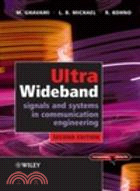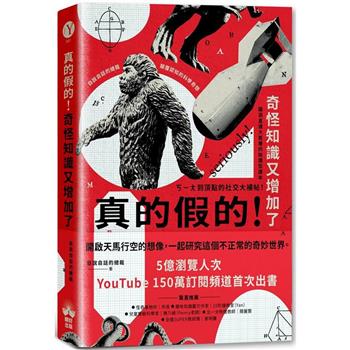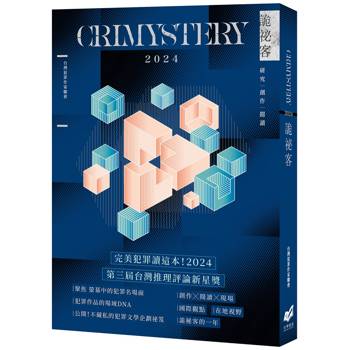| FindBook |
有 1 項符合
ULTRA WIDEBAND SIGNALS AND SYSTEMS IN COMMUNICATION ENGINEERING 2/E的圖書 |
 |
ULTRA WIDEBAND SIGNALS AND SYSTEMS IN COMMUNICATION ENGINEERING 2/E 作者:M. GHAVAMI 出版社:全華圖書股份有限公司(全華經銷) 出版日期:2007-01-01 規格:25*17cm / 精裝 / 304頁 |
| 圖書館借閱 |
| 國家圖書館 | 全國圖書書目資訊網 | 國立公共資訊圖書館 | 電子書服務平台 | MetaCat 跨館整合查詢 |
| 臺北市立圖書館 | 新北市立圖書館 | 基隆市公共圖書館 | 桃園市立圖書館 | 新竹縣公共圖書館 |
| 苗栗縣立圖書館 | 臺中市立圖書館 | 彰化縣公共圖書館 | 南投縣文化局 | 雲林縣公共圖書館 |
| 嘉義縣圖書館 | 臺南市立圖書館 | 高雄市立圖書館 | 屏東縣公共圖書館 | 宜蘭縣公共圖書館 |
| 花蓮縣文化局 | 臺東縣文化處 |
|
|
- 圖書簡介
The thoroughly revised and updated second edition of Ultra Wideband Signals and Systems in Communication Engineering features new standards, developments and applications. It addresses not only recent developments in UWB communication systems, but also related IEEE standards such as IEEE 802.15 wireless personal area network (WPAN). Examples and problems are included in each chapter to aid understanding.
Enhanced with new chapters and several sections including Standardization, advanced topics in UWB Communications and more applications, this book is essential reading for senior undergraduates and postgraduate students interested in studying UWB. The emphasis on UWB development for commercial consumer communications products means that any communication engineer or manager cannot afford to be without it!
New material included in the second edition:
Two new chapters covering new regulatory issues for UWB systems and new systems such as ad-hoc and sensor networks, MAC protocols and space-time coding for UWB systems
IEEE proposals for channel models and their specifications
Interference and coexistence of UWB with other systems
UWB antennas and arrays, and new types of antennas for UWB systems such as printed bow-tie antennas
Coverage of new companies working on UWB such as Artimi and UBISense
UWB potential for use in medicine, including cardiology, respiratory medicine, obstetrics and gynaecology, emergency room and acute care, assistance for disabled people, and throat and vocals
Companion website features a solutions manual, Matlab programs and electronic versions of all figures. - 作者簡介
Mohammad Ghavami is Reader at the Centre for Telecommunications Research, King's College London. From 1998 to 2000 he was a JSPS Postdoctoral fellow in Yokohama National University, Japan, and from 2000 to 2002 he was a researcher at the Sony Computer Science Laboratories, Inc. in Tokyo, Japan.
Lachlan Michael is based at Hattori Information Processing Laboratory, Sony, Inc. and was previously Associate Researcher at Sony Corporation, Tokyo.
Ryuji Kohno is Visiting Researcher at the Fundamental Research Lab, Sony CSL and a Professor at the Yokohama National University, Yokohama, Japan. He was previouslyDirector of the Advanced Telecommunication Laboratory, Sony Coroporation, Tokyo. - 名人/編輯推薦
"Ultra Wideband Signals and Systems in Communication Engineering is a well-developed, introductory book on UWB technologies and applications, which is a strong resource for both beginners who seek to introduction to UWB principles and their applications, and for researchers who wish to better understand the application of UWB technologies to practical systems." (IEEE Signal Processing Magazine, September 2008)
"Well-developed, introductory book on UWB technologies and applications, which is a strong resource for both beginners who seek an introduction to UWB principles and their applications, and for researchers who wish to better understand the application of UWB technologies to practical systems." (IEEE Signal Magazine, September 2008) - 目次
Preface.
Acknowledgments.
List of Figures.
List of Tables.
Introduction.
I.1 Ultra wideband overview.
I.2 A note on terminology.
I.3 Historical development of UWB.
I.4 UWB regulation overview.
I.5 Key benefits of UWB.
I.6 UWB and Shannon’s theory.
I.7 Challenges for UWB.
I.8 Summary.
1 Basic properties of UWB signals and systems.
1.1 Introduction.
1.2 Power spectral density.
1.3 Pulse shape.
1.4 Pulse trains.
1.5 Spectral masks.
1.6 Multipath.
1.7 Penetration characteristics.
1.8 Spatial and spectral capacities.
1.9 Speed of data transmission.
1.10 Cost.
1.11 Size.
1.12 Power consumption.
1.13 Summary.
2 Generation of UWB waveforms.
2.1 Introduction.
2.2 Gaussian waveforms.
2.3 Designing waveforms for specific spectral masks.
2.4 Practical constraints and effects of imperfections.
2.5 Summary.
3 Signal-processing techniques for UWB systems.
3.1 The effects of a lossy medium on a UWB transmitted signal.
3.2 Time domain analysis.
3.3 Frequency domain techniques.
3.4 UWB signal-processing issues and algorithms.
3.5 Detection and amplification.
3.6 Summary.
4 UWB channel modeling.
4.1 A simplified UWB multipath channel model.
4.2 Path loss model.
4.3 Two-ray UWB propagation model.
4.4 Frequency domain autoregressive model.
4.5 IEEE proposals for UWB channel models.
4.6 Summary.
5 UWB communications.
5.1 Introduction.
5.2 UWB modulation methods.
5.3 Other modulation methods.
5.4 Pulse trains.
5.5 UWB transmitter.
5.6 UWB receiver.
5.7 Multiple access techniques in UWB.
5.8 Capacity of UWB systems.
5.9 Comparison of UWB with other wideband communication systems.
5.10 Interference and coexistence of UWB with other systems.
5.11 Summary.
6 Advanced UWB pulse generation.
6.1 Hermite pulses.
6.2 Orthogonal prolate spheroidal wave functions.
6.3 Wavelet packets in UWB PSM.
6.4 Summary.
7 UWB antennas and arrays.
7.1 Antenna fundamentals.
7.2 Antenna radiation for UWB signals.
7.3 Suitability of conventional antennas for the UWB system.
7.4 Impulse antennas.
7.5 Beamforming for UWB signals.
7.6 Radar UWB array systems.
7.7 Summary.
8 Position and location with UWB signals.
8.1 Wireless positioning and location.
8.2 GPS techniques.
8.3 Positioning techniques.
8.4 Time resolution issues.
8.5 UWB positioning and communications.
8.6 Summary.
9 Applications using UWB systems.
9.1 Military applications.
9.2 Commercial applications.
9.3 UWB potentials in medicine.
9.4 Summary.
10 UWB communication standards.
10.1 UWB standardization in wireless personal area networks.
10.2 DS-UWB proposal.
10.3 MB-OFDM UWB proposal.
10.4 A short comment on the term ‘impulse radio’.
10.5 Summary.
11 Advanced topics in UWB communication systems.
11.1 UWB ad-hoc networks.
11.2 UWB sensor networks.
11.3 Multiple inputs multiple outputs and space-time coding for UWB systems.
11.4 Self-interference in high-data-rate UWB communications.
11.5 Coexistence of DS-UWB with Wi-Max.
11.6 Vehicular radars in the 22–29 GHz band.
11.7 Summary.
References.
Index.
|










